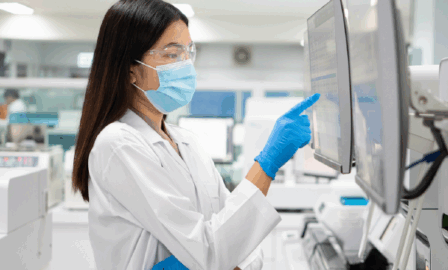Preparing Your QMS to Enable the Lab of the Future
Accelerated by the demands of COVID-19, organizations have continued to increase their investments in laboratory technologies and strategies, often aiming for digitization of the laboratory environment – coined as the Lab of the Future (LoF). The LoF is a bridge between the physical and digital world. It harnesses data as an asset and provides analytics for more informed decision-making across the enterprise. A few benefits of undertaking a LoF project are predictive analytics to reduce deviations and CAPAs, and decreased manufacturing lot release times. Preparing the Quality Management Systems (QMS) program is important enable the Lab of the Future.
Narrowly defining the Lab of the Future as digitization doesn’t capture the full capabilities of a transformative LoF strategy. In the case of QMS, point optimization technologies may bring increased efficiencies in ensuring quality and complying with regulations, but in isolation, these technologies have high costs and low returns. Updating legacy systems is an example of QMS modernization which may yield modest improvements in quality control after an issue occurs. However, a QMS transformation would switch from hindsight to foresight analytical capabilities. Aligning your QMS with organization-wide LoF initiatives can offer benefits such as artificial intelligence and machine learning to predict when compliance issues may arise.
Key Steps to Prepare Your QMS Program to Support and Enable the Lab of the Future (LoF)
Align LoF Sponsors and Determine Scope
The QMS team must align with LoF executive sponsors to determine how the QMS transformation is expected to contribute to the overall LoF strategy and vision. Vendor recommendations are often made by laboratory personnel, which can lead to costly, custom solutions. Alignment will protect against these unnecessary technical investments, help determine QMS-specific goals, and ensure that the QMS will enable enterprise-wide transformation.
LoF QMS software should support rapid deployment and be scalable toward a long-term goal of agile data flow through customer experience, ecosystem, internet of things, and information systems platforms. During the preparation phase, lab staff and LoF sponsors should define the scope of the LoF, including which upstream and downstream functions will be affected by QMS. The QMS team must gather functional requirements to ensure that the LoF QMS meets the needs of all impacted end users. The preparation phase would not be complete without a QMS transformation roadmap. The roadmap provides a timeline for when the QMS transition will occur with respect to other LoF initiatives and outlines deadlines for short-term and long-term goals. Clear QMS goals, scope, and timelines are vital to proper resource allocation, technology prioritization, and the creation of new, LoF-powered business capabilities.
Identify Industry Trends that Will Best Enable Transformation
Staying up to date on laboratory industry trends will help identify threats and opportunities to a LoF QMS system. While regulatory changes pose a threat to a successful transition, advances in medicine, science, and instruments pose opportunities to transform and optimize digital processes. Laboratory science Subject Matter Experts should be involved in identifying which trends best enable digital business in innovation, efficiency, quality, compliance, reproducibility, and profitability.
Ensure that Your QMS System will Integrate into Business Digital Platform
Lack of data sharing architecture is a common risk in building a successful LoF strategy. Your QMS system should allow for data exchange between people, “things,” and business systems (LIMS, ERP, etc.). “Things” refer to physical instruments and objects, like personnel badges, with sensing capabilities that communicate with each other. In the LoF, the QMS program should also enable data sharing across business functions from manufacturing to marketing. Data sharing equips the LoF to reach its full potential to provide enterprise-wide insights, efficiencies, decision-making processes, and workflows. QMS preparation should include an audit of current data warehousing.
Design a QMS Digital Twin
A digital twin is a digital representation of the physical world. A robust LoF would represent all the physical processes currently encompassed in the QMS. A best practice in preparing for a successful LoF transition is to create clear maps of current QMS processes. A detailed map would include the steps of each process, what action(s) trigger the process, what laboratory equipment is involved, which staff roles are involved, and who is responsible.
Final Thoughts: Enable the Lab of the Future
While QMS preparation to enable the Lab of the Future can be time-intensive, thorough preparation allows you to capture the full return on your investment in the LoF. Clarkston Consulting’s team of quality experts can partner with your organization throughout the process from QMS alignment to executive strategy, vendor selection, business analysis, and beyond.
Subscribe to Clarkston's Insights
Contributions from Sydney Daniels



